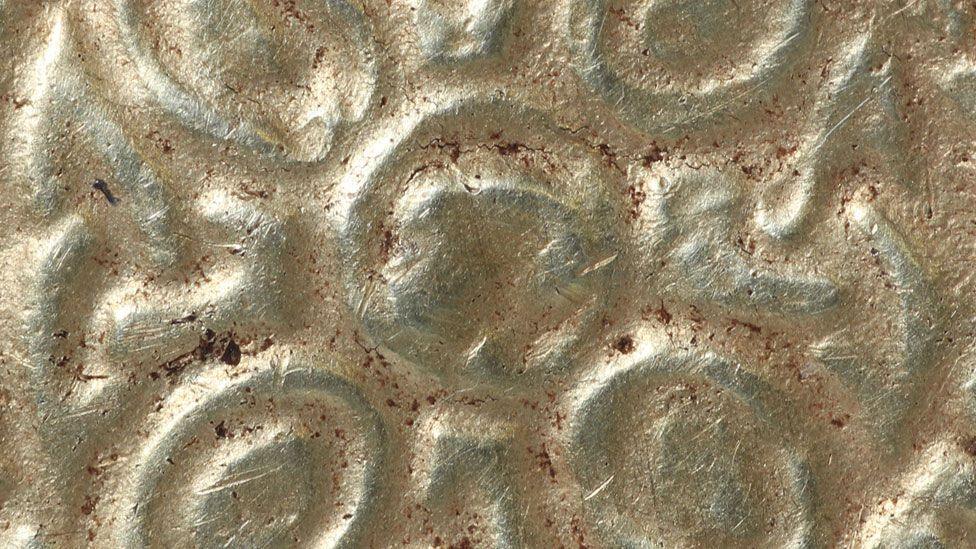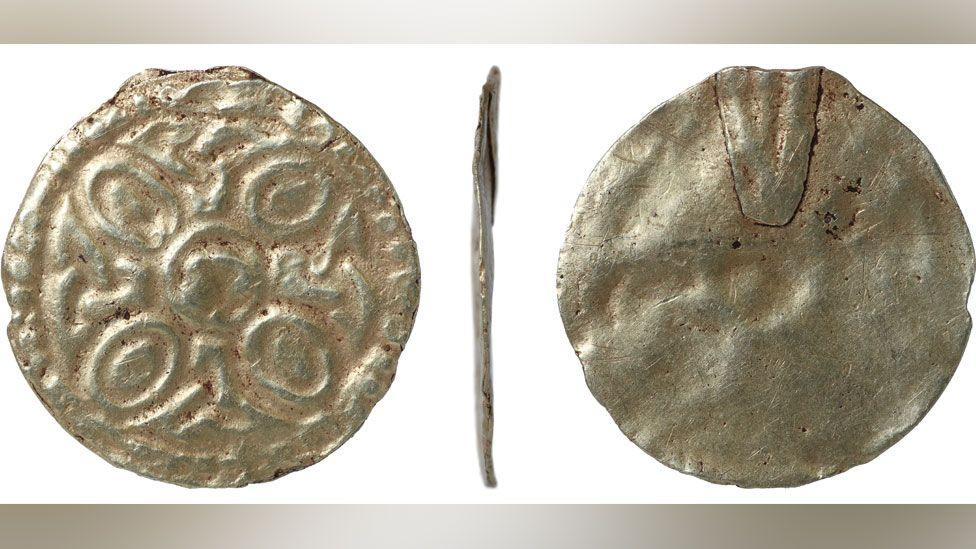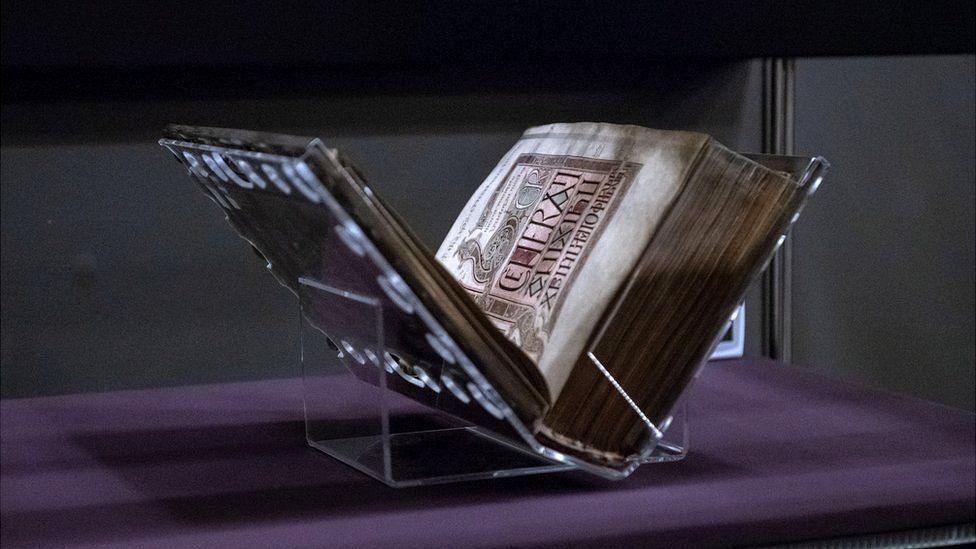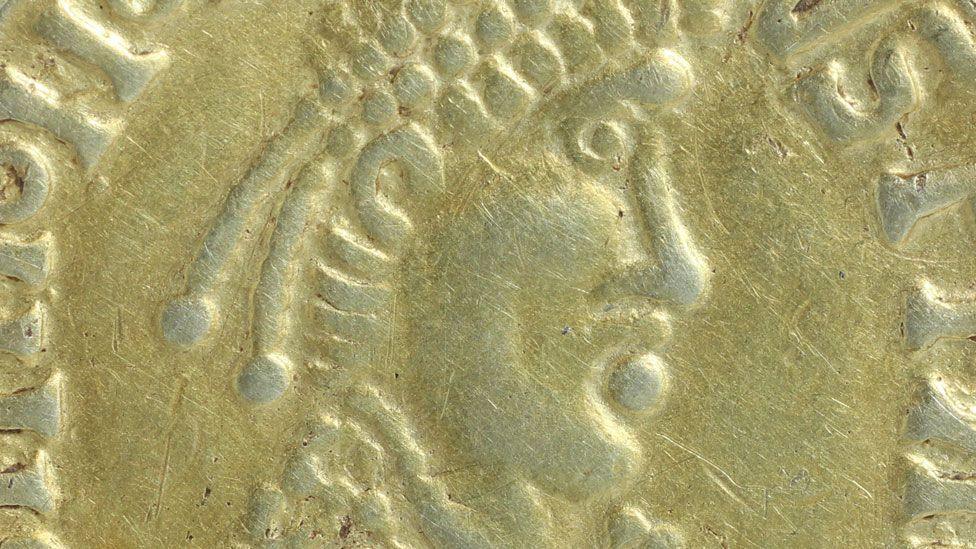Rare gold pendant find dates to 'mysterious moment'

- Published
A recently discovered gold pendant appears to date to a "mysterious moment" in the early 8th Century, according to an expert.
The 15mm-diameter (0.6in) Anglo-Saxon disc was unearthed by a metal detectorist near Swaffham, Norfolk, in February.
Historian Helen Geake said the "really rare" find was decorated with designs similar to those seen on coins of the time.
The pendant is going through the treasure process and Norwich Castle Museum hopes to acquire it.
"It's a really rare find and we're guessing it's from the early 8th Century because it doesn't fit with anything else," the Norfolk finds liaison officer said.
"The odd thing is, people are still wearing things [like the pendant] but they don't lose them much and it shows how much our knowledge of the Anglo-Saxon period is from earlier graves."

Much of the jewellery seen as typically Anglo-Saxon dates from the 6th or 7th centuries, when people were buried with grave goods.
The very high-status objects discovered at the burial at Sutton Hoo in Suffolk are probably the most famous.
"We know almost nothing about the jewellery of the early 8th Century because the way of life suddenly changes and people stop being buried with clothes and artefacts and are usually wrapped in a shroud," said Dr Geake.
"It's a mysterious moment."

The Lindisfarne Gospels was probably made for Eadfrith, the bishop of Lindisfarne from AD 698 to 721
The majority of finds unearthed from the early to mid-8th Century are coins and pottery, including the mass-produced Ipswich ware pots and pitchers found across the region.
Kings did not add their names to coins until Beonna became the ruler of East Anglia in AD749, so instead they are dated by their patterns, like this pendant.
There are two stand-out objects from the period - the Lindisfarne Gospel, now at the British Library, and the Franks Casket, part of the British Museum collection, external.
But Dr Geake said: "They are examples of high class art and craft, whereas this little gold pendant might well fill in a gap between the furnished burials of earlier centuries and the late 8th Century, when there's lots of history and archaeology."
A coroner at a treasure inquest decides whether a discovery is treasure, and whether a museum should have first refusal over it.
Get in touch
Do you have a story suggestion for Norfolk?
Follow Norfolk news on BBC Sounds, Facebook, external, Instagram, external and X, external.
Related topics
- Published8 June

- Published20 May

- Published20 October 2024
